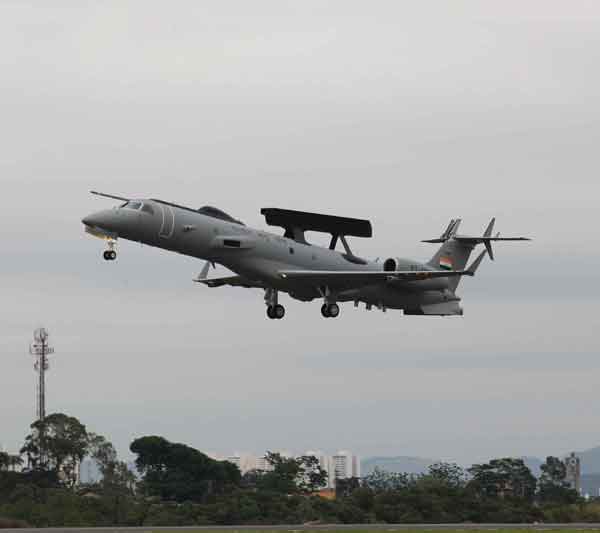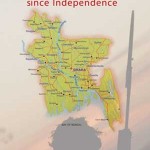Cruise Missiles and UAVs
Cruise missiles launched from airborne/ground based/naval platforms will be the most difficult to detect and intercept due to their small radar signature and low level flight profiles resulting in late detection and low reaction time for successful interception. Cruise missile attack is a challenge that will require enormous resources, manpower and effort to counter. Airborne platforms equipped with radar and infra-red detection capability could provide the solution. Given the gaps in radar coverage over the entire country, anti-cruise missile measures need to be adopted on a war footing.
UAVs, especially the armed variety, are gradually emerging as the new threat. Designed with stealth characteristics, armed with lethal weaponry of the air-to-air or air-to-ground variety, this potent mix will require enormous effort and resources to counter.
Networking of Radars
Net-centric warfare is the future of war. The challenge for the IAF is to gather the radar characteristics of each of these sensor platforms, low level warning, mountain and medium power static radars, the AWACS and the indigenous AEW&Cs, meld the radar picture so that an Air Defence Commander can easily identify, track and assign the appropriate weapon system to tackle the incoming threat. For the IAF, its communication network, serving as the foundation – the AFNET, is already in place. The ability of airborne and land-based sensors to exchange data and resolve anomalies needs to be built-in when purchasing a new sensor or worked on to ensure seamless integration.
Low level warning radars would form the first line of defence to detect intruder aircraft and missiles at low altitudes…
Networking of Military and Civil Radars
Surveillance radars of the Army and the Navy need to be interlaced with the respective nodal radars of the IAF. While these will have control over movement of airborne platforms within their theatre/fleet, they will benefit from the information provided by the respective IAF nodal radars on incoming movement and also to pass on outgoing movement to enable effective control. In the case of the Navy, as the fleet approaches IAF radar coverage, exchange of data amongst them is needed in order to obviate conflict. The requirement exists for the three services to be able to exchange air movement data in real time through a common interface based on their respective communication networks. It is equally essential for data fusion of the air picture of civil sensors with the military sensors across the country. Turf battles are to be expected in peacetime with wiser heads being required to resolve issues. This will reduce the IAF’s reaction time and greatly enhance its response to even peacetime air intrusions such as hijacking or any other contingency.
Command and Control System
The availability of different types of radars from low level to medium level static, to the mobile ones such as the AWACS, requires software programs that will enable all radars to exchange target information seamlessly. The software should be able to validate the most accurate blip to provide a clear picture to the Tactical Commander for ease of decision making. The indigenous Integrated Air Command and Control System (IACCS) set up by the IAF is also coming up across the country.
UAVs, especially the armed variety, are gradually emerging as the new threat…
Electronic Warfare Capability
All radars and sensors need to be equipped with protection against electronic attack. While this would be a standard fit on all types of radars, the variety and the need to train and even modify the software to cater to different contingencies will pose a great challenge for the IAF.
Training
Due to the proliferation of radar types with varying capabilities, graduated training modules covering each type of radar and cross-training wherever necessary, will enable Air Headquarters to plan the career profile of each level of supervisory staff whether an officer or an airman. It is also time to go for delegation of tasks such as fighter controlling can be done by personnel below officer rank after suitable training. In certain cases, automation can also be an option.
…Surveillance radars of the Army and the Navy need to be interlaced with the respective nodal radars of the IAF…
Advancements in Technology
Trials are being conducted in the USA for using high altitude Unmanned Blimps operating at altitudes of over 20,000 metres fitted with radars to orbit over designated areas for hours to monitor the movement of airborne vehicles and even ground-based ones. The IAF could even consider using high altitude UAVs fitted with radars to perform such tasks.
Conclusion
Given the overall responsibility of Aerospace Defence, the challenges before the IAF in providing an effective and seamless countrywide radar cover and the task of keeping up with technology are daunting. The emerging threats of the ballistic and cruise missile and UAVs will require tremendous efforts by the tri-services of the nation.
…Communications protocols would have to be drawn up within the services and with Civil Aviation sector…
The vast area and varied terrain demand large numbers of different types of radars – ranging from the low level, to the mountain variety, from medium power to aerostats and AWACS.
There will be problems related to working on source codes of different radars to arrive at an integrated radar picture. Communications protocols would have to be drawn up within the services and with Civil Aviation sector. Apart from the sheer numbers, there is a requirement for an effective interface between all military radars with their civilian counterparts. An overarching command and control set up, which may step on the toes of the numerous users, will require a mature resolution. Hopefully, like all challenges in India, only when these requirements are met, can one rest assured that the radar coverage in India will have the capability to cope with both peacetime and wartime threats!






“Efforts to acquire radars of all varieties, AWACS and aerostats even though in small numbers, are steps in the right direction but there is more to be done.” – This is confusing technology wise. AWACS (and AEW&Cs) are air borne platforms. AWACS are fitted with RWRs (radar warning receivers). They are meant for Electronic Warfare deployments. They do not carry phased array radar sets for tracking or beam forming applications.. Although there are some overlaps with radar technology, electronic warfare (EW suites) is essentially “passive”, i.e. just like a listening post. Ground based radar stations have different purpose and applications.
“Besides, the sharp end comprising aircraft, missiles and air defence guns, the first to detect intruders are the radars” – Not really ! These are radar warning receivers (RWR) in contrast to radar receivers. There is vast difference in technology (and operation) between the RWRs and radar receivers due to the fact that the former is wideband operation whilst the other is narrow band since one knows here the carrier frequency (correlation receiver) ! Besides, for the RWRs one must have a library of hostile emitters which is built up from a priori threat intelligence.